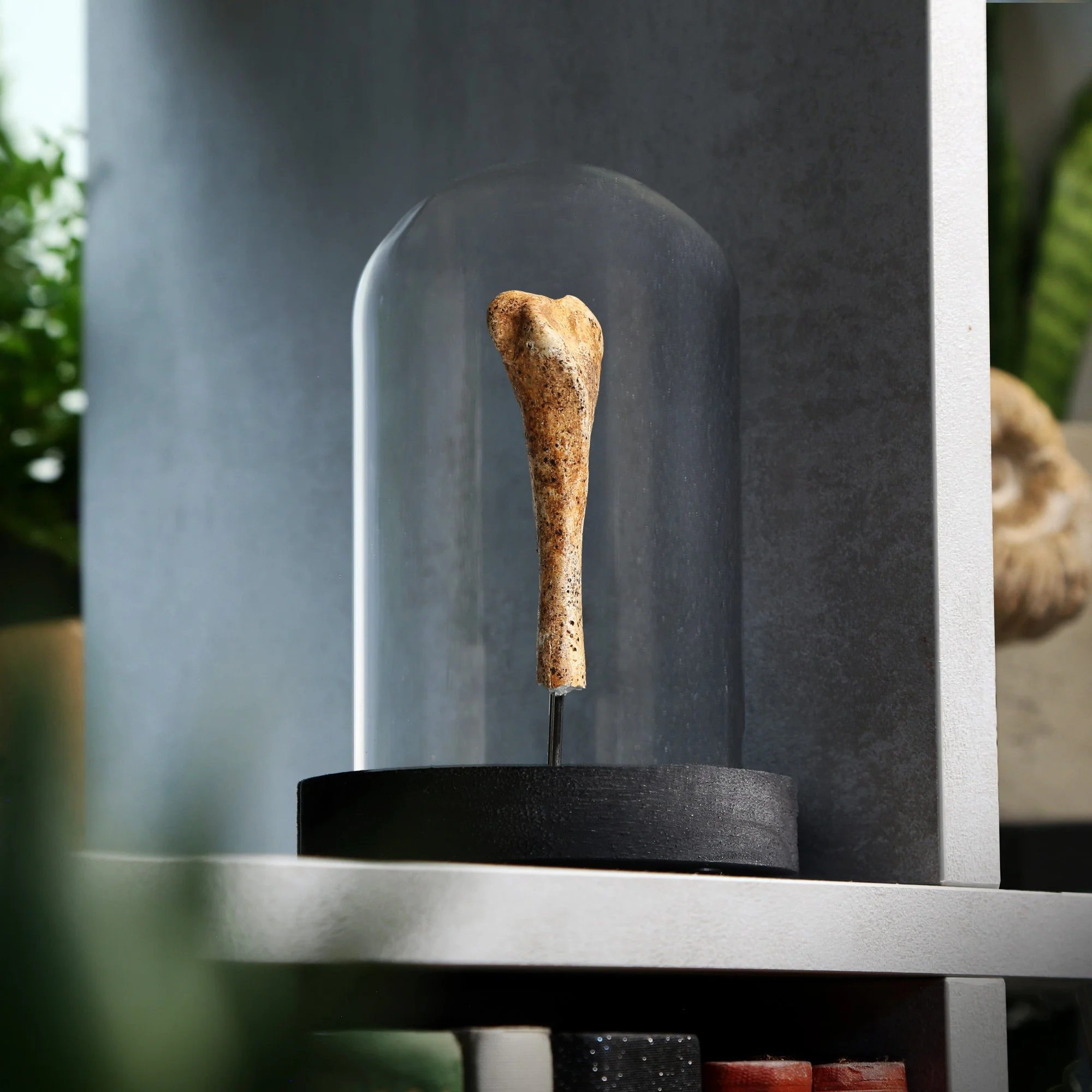 Image 1 of 3
Image 1 of 3

 Image 2 of 3
Image 2 of 3

 Image 3 of 3
Image 3 of 3




Woolly Rhinoceros Bone
This fossilised bone once belonged to a Woolly Rhinoceros (Coelodonta antiquitatis), a massive Ice Age herbivore that roamed the mammoth steppe of Europe and northern Asia during the Pleistocene epoch, around 20,000 to 50,000 years ago. With its dense structure and weathered surface, the bone offers a tactile connection to a cold, ancient world long vanished. Displayed on a bespoke oak stand.
Woolly rhinos were well-adapted to glacial climates, with thick fur, short limbs, and a large front horn used for clearing snow to graze on tough grasses. Their bones are typically found in permafrost or riverbeds, preserved by the very cold that once sustained them.
Now stabilised and conserved, this specimen stands as a powerful relic of Ice Age megafauna, both a fragment of deep time and a testament to life’s resilience in extreme environments.
Base: Solid Smooth Grain European Oak
Mount: Stainless Steel
Specimen Dimensions: 90mm h x 60mm w
Total Dimensions: 150mm h x 120mm w
Please be aware that sizes will vary as these are natural products subject to natural variation. The picture shown is an example of the quality that you can expect to receive.
This fossilised bone once belonged to a Woolly Rhinoceros (Coelodonta antiquitatis), a massive Ice Age herbivore that roamed the mammoth steppe of Europe and northern Asia during the Pleistocene epoch, around 20,000 to 50,000 years ago. With its dense structure and weathered surface, the bone offers a tactile connection to a cold, ancient world long vanished. Displayed on a bespoke oak stand.
Woolly rhinos were well-adapted to glacial climates, with thick fur, short limbs, and a large front horn used for clearing snow to graze on tough grasses. Their bones are typically found in permafrost or riverbeds, preserved by the very cold that once sustained them.
Now stabilised and conserved, this specimen stands as a powerful relic of Ice Age megafauna, both a fragment of deep time and a testament to life’s resilience in extreme environments.
Base: Solid Smooth Grain European Oak
Mount: Stainless Steel
Specimen Dimensions: 90mm h x 60mm w
Total Dimensions: 150mm h x 120mm w
Please be aware that sizes will vary as these are natural products subject to natural variation. The picture shown is an example of the quality that you can expect to receive.











